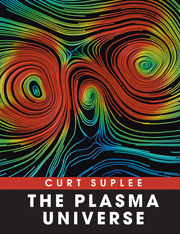Book contents
- Frontmatter
- Contents
- List of Figures
- Preface
- Chapter 1 The Fourth State of Matter
- Chapter 2 The Music and Dance of Plasmas
- Chapter 3 The Sun–Earth Connection
- Chapter 4 Bringing the Sun to Earth: The Story of Controlled Thermonuclear Fusion
- Chapter 5 The Cosmic Plasma Theater: Galaxies, Stars, and Accretion Discs
- Chapter 6 Putting Plasmas to Work
- Index
Chapter 6 - Putting Plasmas to Work
- Frontmatter
- Contents
- List of Figures
- Preface
- Chapter 1 The Fourth State of Matter
- Chapter 2 The Music and Dance of Plasmas
- Chapter 3 The Sun–Earth Connection
- Chapter 4 Bringing the Sun to Earth: The Story of Controlled Thermonuclear Fusion
- Chapter 5 The Cosmic Plasma Theater: Galaxies, Stars, and Accretion Discs
- Chapter 6 Putting Plasmas to Work
- Index
Summary
NO MATTER WHERE we live or work in the modern world, plasmas pervade our lives. They are seldom seen directly. But they are essential to microelectronics and telecommunications, material coatings and surface treatments, creation of bio-inert devices for surgical implantation, key processes in the textile and clothing industries, and, of course, light fixtures of numerous kinds.
All of these applications, and many more, are subsumed under the general designation of “low-temperature” plasma science, although “low,” as we shall see, is a relative term. At energies below 10 eV (100,000 K), plasmas can interact in myriad usable ways with their surroundings, depositing layers of material on surfaces, prompting chemical reactions, irradiating nearby objects, and even providing propulsive power.
To get a sense of the broad utility of the low-temperature plasma domain, one need look no farther than the ceiling above, where there is likely to be a fluorescent lighting fixture – the single most familiar plasma appliance in modern society. Fully one-tenth of all the electrical power transmitted in the United States is employed in producing plasmas in such lamps. Without their dependable efficiency, which is about five times that of incandescent lights, America's annual energy consumption would be drastically higher and its conquest of darkness far less complete.
- Type
- Chapter
- Information
- The Plasma Universe , pp. 63 - 72Publisher: Cambridge University PressPrint publication year: 2009



